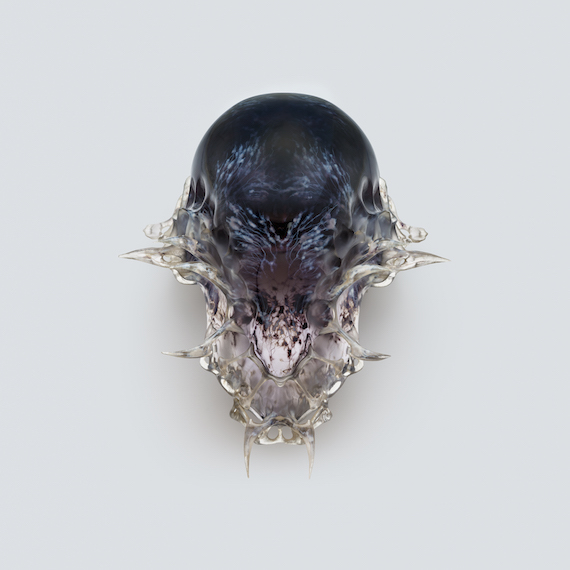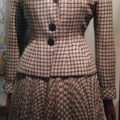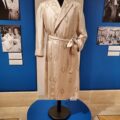Louise Dahl Wolf – Review
November 5, 2017Louise Dahl Wolf (1895-1989) was a fashion and portrait photographer of the thirties, forties and fifties. Her photos regularly appeared in Harper’s Bazaar, and the fashion images she created became emblematic of the chic woman of the age.
In her most celebrated works, poised women pose in far-flung locations. Dahl-Wolf used both black and white and colour film; in both, the composition is arresting. Her black and white images use light and shadow to striking effect, and her colour images show a complete mastery of hue and tone.
Apparently, the perfectionist Louise Dahl Wolf worked closely with the printers to ensure that fidelity to her original vision was achieved with this new technology of four colour magazine printing and the images on display, which are original magazine covers and pages, are very vibrant.
This exhibition, at the Fashion and Textile Museum in London, aims to show both the well-known side of Louise Dahl Wolf, as in these fashion shoots, and the less well known, with some nudes, portraits, and the odd still life.
Fashion photography was really in its infancy at the time when Louise Dahl Wolf started working at Harper’s Bazaar. Previously, fashion illustrations had ruled, and photography was restricted to a few portraits per issue of the beautiful aristocracy. Dahl-Wolf, along with other greats like Lillian Bassman and Irving Penn, with whom she’s often compared, was able to invent her own rules.
Louise Dahl-Wolf – worked with top models
However, although she was using the same locations and top models as Penn, for me, Louise Dahl Wolf’s work is both warmer and more sympathetic towards both women and location. At the time, of course, foreign travel was difficult and expensive, and models posing in places like Tunisia, Cuba or Mexico was genuinely eye-catching and exciting. But while Penn’s models look pale, awkward and visibly ill at ease next to whatever camel or toothless old man they have been propped up next to, afraid of dirtying their couture, when Dahl-Wolf photographs them they seem to have arrived a few days earlier, got a bit of a tan, and a chance to settle in.
Louise Dahl Wolf’s favourite model Liz Gibbons wrote “I adored posing for her. She was the only photographer who gave her model the opportunity to become a great actress, dancer, femme fatale, and the world’s reigning beauty. Her running praises were head turning and believable.”
Liz Gibbons, along with Suzy Parker, Jean Patchett, Barbara Mullen, Mary Jane Russell and Evelyn Tripp was one of the first super models, and it has been argued that Louise Dahl Wolf helped these women to become so, bringing the profession from one of anonymity and faint shame to something to be aspired towards.
Louise Dahl-Wolf – Nude Studies
Looking at her very early work, perhaps the reason that Louise Dahl Wolf was so in tune with her sitters is that she was very similar to them. Self-portraits and photos of the photographer, including an early nude of herself, show a physical similarity. Dahl-Wolf had also travelled widely and so could probably easily imagine herself in the situations she put her women in. She studied life drawing amongst other subjects at art school and, with a group of female friends, experimented with nude studies of each other. I think this helped her to feel really comfortable with her female sitters, clothes on or off.
Louise Dahl Wolf’s early work also includes pieces like “Tennessee Mountain Woman” (originally titled “Mrs. Ramsey, Smoky Mountains, Tennessee”), and two portraits of “Ophelia”. These, unusual at the time, show two older women, one white and one black, poverty and age carved into their faces yet their personality and experience clearly showing.
The photographs received rave reviews, yet I feel like Louise Dahl Wolf was just finding her feet. They are highly reminiscent of Alfred Stieglitz (husband and frequent portraitist of Georgia O’Keeffe). Later on she would also create portraits of film stars like Vivienne Leigh, Bette Davis and, very excitingly for fashion fans, Cecil Beaton, Coco Chanel, Madeline Vionnet, and Christian Dior. They were used to accompany magazine features. They are technically fine, yet curiously lacking in distinction and personality.
This is quite a small exhibition, but big enough to convey the best of Louise Dahl Wolf’s work. The Fashion and Textile Museum always marries a sound track to its shows and for this the music is something gentle in the background. The wall colours are also carefully chosen, muted greens, yellows, salmons and reds to add interest to but not overwhelm the mainly black and white images. The framing is kept simple, with matching white frames. There are occasional tables of original magazines and materials to read.
Small but perfectly formed
It’s really a very nice way to spend an hour or two. It’s a shame the curators felt the need to pad it out a bit more – at the back is a mannequin, dressed in a similar fashion to Louise Dahl Wolf’s photographs. That’s a nice touch. But upstairs are a row of original Dior outfits, six or seven of them, with very little relevance to the photos except that Dahl Wolf often photographed Dior couture.
Wallace Sewell
There are also two separate exhibitions in the museum, included in the entry ticket and worth a look. One is on Wallace Sewell. You may not be familiar with the name of these textile designers, but if you live in London, it’s likely you sit on their work almost every single day. Emma Sewell and Harriet Wallace-Jones designed the seat fabric for Transport For London’s vehicles -that distinctive moquette for tube and buses. Examples, drawings and a video take you through the design process for that and their other works.
Harper’s and Queen celebrations
The other exhibition celebrates 150 years of Harper’s and Queen. It’s a shame they couldn’t have had a larger exhibition, following the dizzying splendour of Vogue’s centenary exhibition at the National Gallery. But this one is quite sweet, with some covers, sketches and comments from editors.
Louise Dahl Wolf – A Style of her Own, along with other exhibitions,is at the Fashion and Textile Museum until 21st January 2018
Twins at the Beach, Nassau, 1949. Photograph by Louise Dahl-Wolfe. Collection Staley Wise Galley. ©1989 Center for Creative Photography, Arizona Board of Regents.
Lauren Bacall photographed by Louise Dahl-Wolf for the cover of Harper’s Bazaar.
Installation view
Installation view
Installation view









